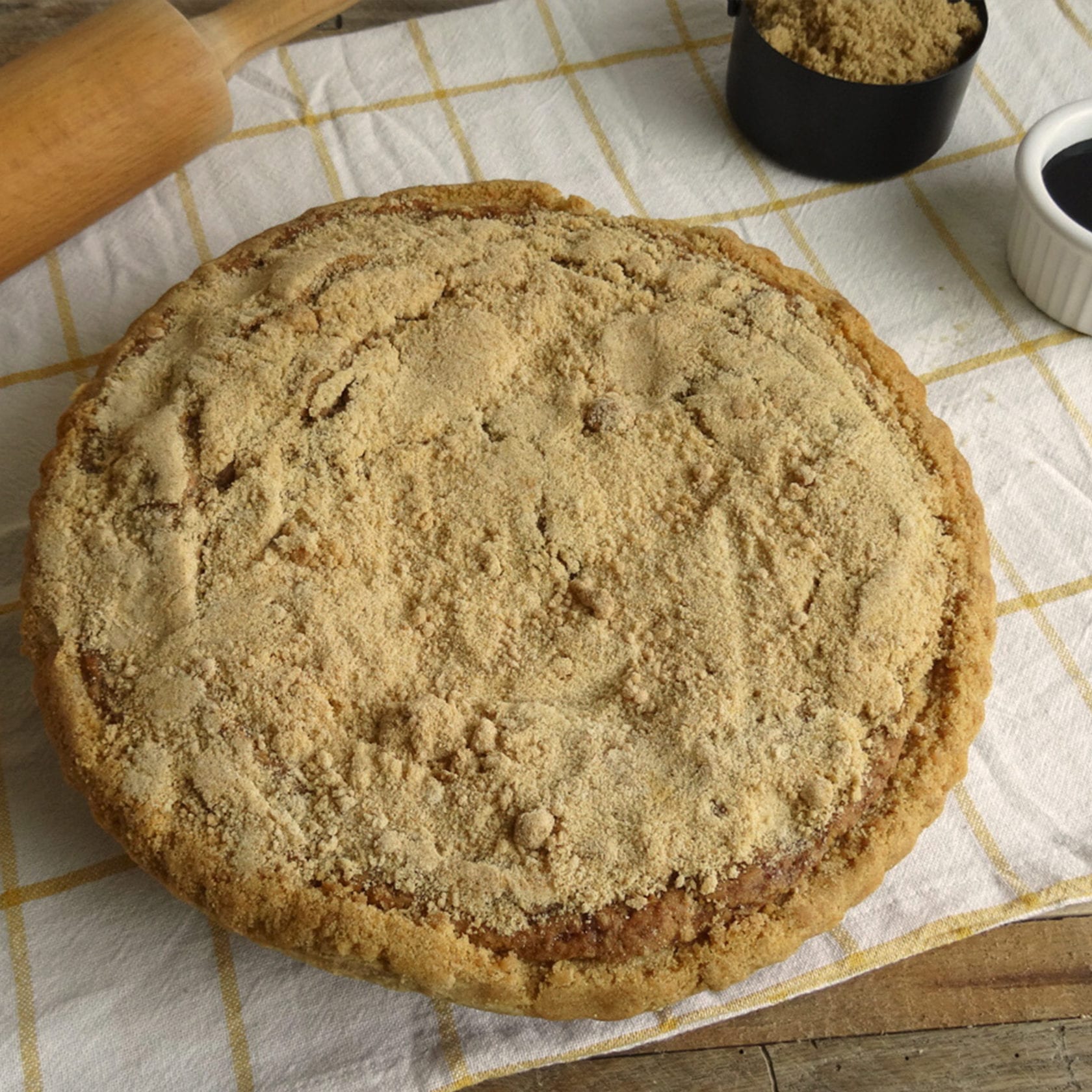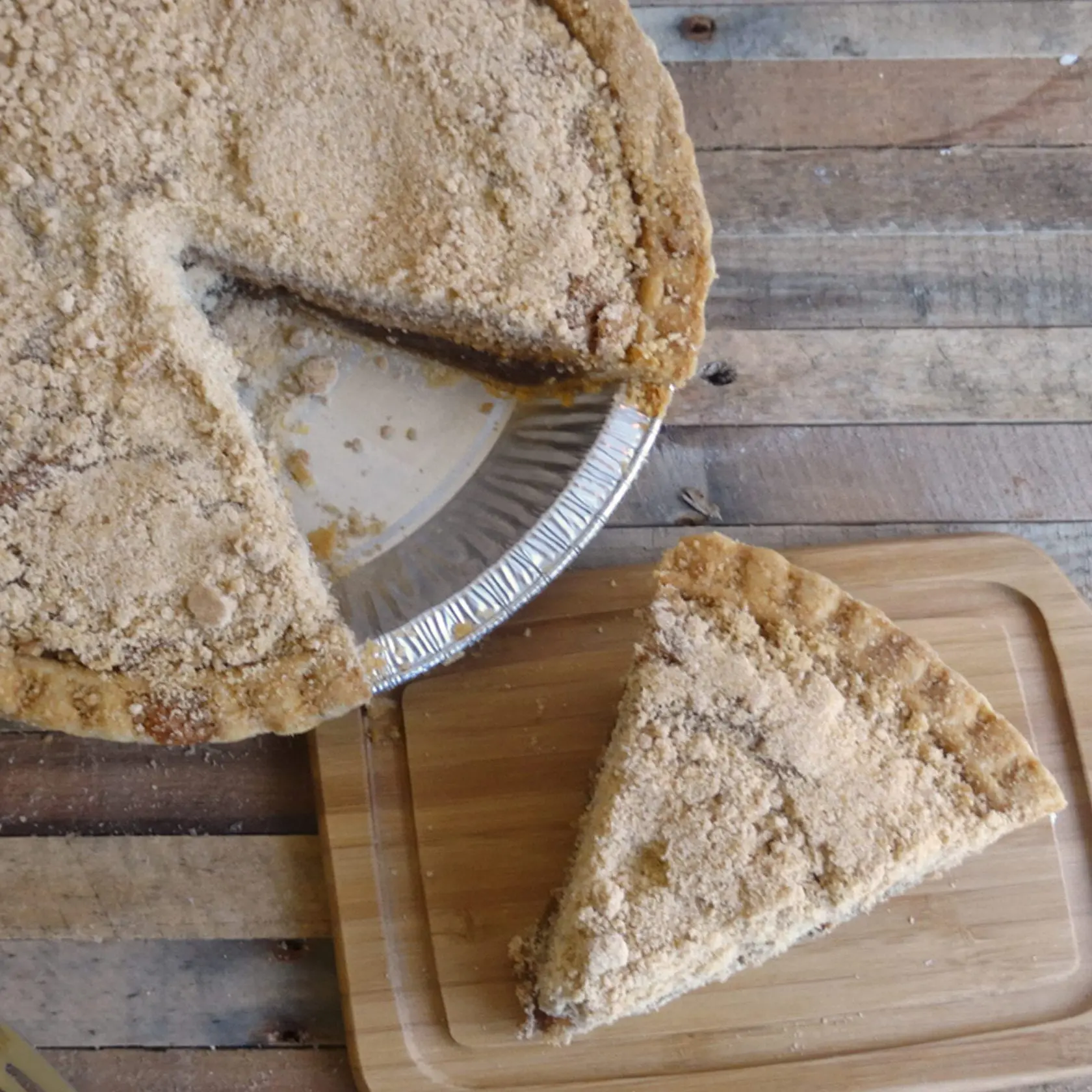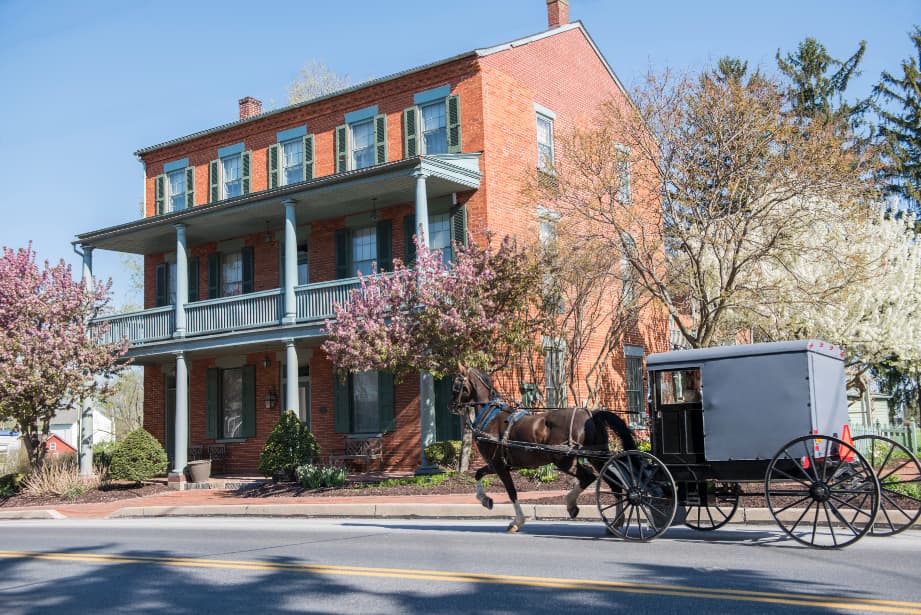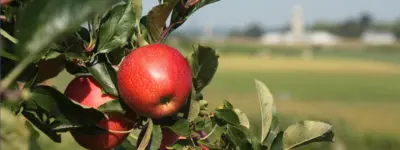Shoofly pie is a sweet molasses crumb pie. With its rich flavor, gooey syrup, brown sugar, and crumb topping, this delicious treat has been a longtime staple in Lancaster County, PA. The sweet, delicious pie is a must-try for all pie enthusiasts.

What is in shoofly pie?
The star of the show is molasses, but shoofly pie is also typically composed of flour, brown sugar, water, spices, and sometimes egg. The pie is topped with a crumb mixture and served in a flaky pie crust. Shoofly pie is similar to a coffee cake but with a gooey molasses bottom.
Shoofly pie typically consists of the following key ingredients:
- Pie Crust: Shoofly pie is traditionally made with a pie crust as the base. The crust is often a simple combination of flour, salt, and fat (usually lard or butter), mixed together and shaped into a pie shell.
- Molasses: The primary and most distinctive ingredient in shoofly pie is molasses. Dark molasses is typically used, and it provides the pie with its deep, rich flavor and dark color.
- Brown Sugar or Dark Corn Syrup: In addition to molasses, shoofly pie includes brown sugar or dark corn syrup to further sweeten and balance the intense flavor of the molasses.
- Flour Mixture: The flour mixture is used to create the crumb topping for the pie. It typically consists of flour, sugar, and sometimes a bit of butter. This mixture gives the pie its signature crumbly, streusel-like topping.
- Hot Water: Hot water is often added to the pie filling to help dissolve the molasses and sugar, creating a thick, gooey, and sweet bottom layer.
- Baking Powder: Baking powder is sometimes included in the flour mixture to help the crumb topping rise and become light and crumbly.
- Spices (Optional): Some shoofly pie recipes may include spices like cinnamon, ginger, or cloves to add a hint of warmth and flavor complexity to the dessert.
Wet Bottom Shoofly Pie vs. Dry Bottom Shoofly Pie
There are two heavily debated variations of the pie: dry bottom and wet bottom. Using flaky or mealy crust for the pie dough determines whether the bottom of the pie is thick or barely there.
What is a Dry Bottom Shoofly Pie?
The dry bottom version resembles a soft gingerbread or dry cake-like consistency. The dry bottom is guessed to be the original version, producing a pie meant for dipping in coffee.
What is a Wet Bottom Shoofly Pie?
A wet bottom shoofly pie, predominant in Lancaster County, features a tender molasses custard topped with crumbs. The wet variety came about later and is more prevalent in the Pennsylvania Dutch region.
What does shoofly pie taste like?
Shoofly pie has a very distinct flavor and texture profile. The final product yields an intense sweetness and cake-like texture. The taste of shoofly pie can be described as:
- Sweet: Shoofly pie is known for its intense sweetness. It typically contains molasses, brown sugar, or dark corn syrup, which contribute to its rich, sugary flavor.
- Molasses: The molasses used in shoofly pie gives it a deep, slightly bitter, and earthy sweetness. This is balanced by the sweetness of the sugar and the pie’s other ingredients.
- Crumbly: Shoofly pie consists of a crumbly, crumb-topping layer that contrasts with the moist, gooey bottom layer. The crumb topping is often made with ingredients like flour, butter, and sugar, creating a sandy, streusel-like texture.
- Butteriness: Many shoofly pie recipes also incorporate butter, which adds a buttery richness to the pie’s overall flavor.
- Hint of spices: Some variations of shoofly pie include spices like cinnamon, ginger, or cloves, which can provide subtle, warm undertones to the pie’s taste.
The combination of these elements results in a unique and indulgent dessert that is both sweet and slightly savory, with a textural contrast between the crumbly top and the gooey, molasses-infused bottom.
Shoofly pie history
According to historian William Woys Weaver, shoofly pie started as a crustless molasses cake or Centennial Cake. It was baked in 1876 to celebrate the 100th anniversary of the signing of the Declaration of Independence. Shoofly pie was a variation of the treacle tart. Treacle is a generic British term for any syrup made during the refining of sugar cane. Later, refined sugar became more affordable and overtook treacle as a sweetener. However, colonial Americans often substituted molasses for treacle in their recipes. A crust was added to make it easier to enjoy without needing a plate or fork.
Traditionally, the pie was a poverty food served up only for breakfast or in the evening with supper, or as a field break snack with coffee. Due to the absence of eggs, historians concluded shoofly pie was a winter dish. Hens generally did not lay eggs in the colder weather. A pie without eggs produces a longer shelf life. Instead, bakers leaven the pie with baking powder. The addition of eggs was made in the 1920s.

How did shoofly pie get its name?
Weaver, a 13th-generation Pennsylvania Dutchman, states the name “Shoofly” likely derives from Shoofly the Boxing Mule. Shoofly was a popular traveling circus animal in southeastern Pennsylvania at the time. The animal was trained to stand on his hind legs and wore boxing gloves on his front hooves. His frequent opponent was a horse. Shoofly was so beloved they named products in his honor, including a brand of molasses produced in Philadelphia. Shoofly’s name may have originated from a popular song at the time, “Shoo, Fly, Don’t Bother Me!”
Another less likely theory comes from author Patricia Brunning Stevens. According to Stevens, the unusual name of shoofly pie came from “the fact that pools of sweet, sticky molasses sometimes formed on the surface of the pie while it was cooling, inevitably attracting flies.” She suggests the pie’s invention stems from Pennsylvania Dutch farm wives making do with what remained in the larder during the late winter. However, she fails to answer the question of where all the flies came from in the winter season.
Where to find shoofly pie
Throughout most of American restaurants and bakeries, you’ll rarely find shoofly pie. But in Amish country, you’ll discover shoofly pie served in countless places drawing standing-room-only crowds. Bird-in-Hand is famous for Grandma Smucker’s shoofly pie. The bakery prepares the shoofly pie from an old family recipe handed down for generations and fine-tuned by Grandma Smucker. It is one of Bird-in-Hand Bakery & Cafe’s most popular items. You can also order Grandma Smucker’s 10-inch shoofly pie online to stash in your freezer or share it with a friend. We also offer a Shoofly Pie and Whoopie sampler and a Shoofly Pie Bonus Gift Bundle.
While you can refrigerate your shoofly pie, it doesn’t need to be refrigerated. Shoofly pie will keep covered on the countertop for a few days at room temperature. One alternative is to freeze your shoofly pie if you don’t plan to eat it right away. To defrost, place the pie in tin foil and thaw it at room temperature.
If you’re looking for an authentic Pennsylvania Dutch shoofly pie, there’s no better place to look than Bird-in-Hand. Try a slice from the Bird-in-Hand Bakery & Cafe with a hot cup of coffee or tea and enjoy the mouthwatering combination of molasses, eggs, flour, brown sugar, and cinnamon. We also offer premium artisan ice cream, Grandma Smucker’s Apple Fritters, Sticky Buns, and more. Order online or visit in person for authentic Amish Baked Goods.








